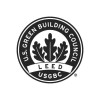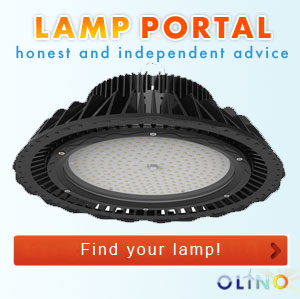Endurance test – Led Luminaire EcoUnlimitLed (EUL) by Hato Lighting Solutions
Posted by Marcel van der Steen in Endurance Test No Comments» Hato Lighting Solutions presents an EUL-LED light, put in an endurance test.
Hato Lighting Solutions presents an EUL-LED light, put in an endurance test.
This article presents the endurance test results. The test is running more than 11.500 hours.
Lemnis Lighting Asia – Endurance test Pharox Asia Led Glass Tube 60 cm
Posted by Marcel van der Steen in Endurance Test No Comments»![]() Lemnis Lighting Asia presents an LED Tube Light with glass tube, put into an endurance test.
Lemnis Lighting Asia presents an LED Tube Light with glass tube, put into an endurance test.
This lamp has been measured at zero hours (new state) before it went into the endurance test.
This article presents the endurance test results.
Changes in LEED Standards Receive Negative Feedback
Posted by Sam Marquit in Energy saving No Comments» The General Services Administration (GSA) is looking at adopting new, stricter standards for their Leadership in Energy and Environmental Design (LEED) program, a system that gives businesses rewards for adhering to green practices in building design. Most people who want to build a world with better environmental standards would see this as a logical step forward, making progress towards a cleaner world. Unfortunately, certain industries, such as those that sell plastics, vinyl and chemical products are attempting to block the new set of standards.
The General Services Administration (GSA) is looking at adopting new, stricter standards for their Leadership in Energy and Environmental Design (LEED) program, a system that gives businesses rewards for adhering to green practices in building design. Most people who want to build a world with better environmental standards would see this as a logical step forward, making progress towards a cleaner world. Unfortunately, certain industries, such as those that sell plastics, vinyl and chemical products are attempting to block the new set of standards.
 Appliances and other electronic equipment are getting more efficient, policy makers are pleased. But is that justified, are we heading in the right direction? Or are we deluding ourselves? According to the IEA (International Energy Association), more than 50% of the targeted reduction in CO2 emissions required to reach international climate goals of 2030 must come from energie conservation. Politicians at the Dutch and European level have been working on this issue for a long time, but the total energy consumption of European households has only increased in the period from 1990 to the present.
Appliances and other electronic equipment are getting more efficient, policy makers are pleased. But is that justified, are we heading in the right direction? Or are we deluding ourselves? According to the IEA (International Energy Association), more than 50% of the targeted reduction in CO2 emissions required to reach international climate goals of 2030 must come from energie conservation. Politicians at the Dutch and European level have been working on this issue for a long time, but the total energy consumption of European households has only increased in the period from 1990 to the present.
 What does environmental devastation actually look like? At TEDxVictoria, photographer Garth Lenz shares shocking photos of the Alberta Tar Sands mining project — and the beautiful (and vital) ecosystems under threat.
What does environmental devastation actually look like? At TEDxVictoria, photographer Garth Lenz shares shocking photos of the Alberta Tar Sands mining project — and the beautiful (and vital) ecosystems under threat.
 Very interesting interview on the Dutch television with the Britisch Professor of Sustainable Development at University of Surrey how we can have prosperity without growth. On a final planet we cannot have continuous growth, therefore we need to think in other solutions.
Very interesting interview on the Dutch television with the Britisch Professor of Sustainable Development at University of Surrey how we can have prosperity without growth. On a final planet we cannot have continuous growth, therefore we need to think in other solutions.
 When problems such as greenhouse gases or the imminent energy crisis are brought up in conversation, nuclear energy is often cited as a solution. The advantages are apparently easy to quantify. According to many, nuclear energy is a near boundless source of energy and does not have the disadvantage of CO2. emissions.
When problems such as greenhouse gases or the imminent energy crisis are brought up in conversation, nuclear energy is often cited as a solution. The advantages are apparently easy to quantify. According to many, nuclear energy is a near boundless source of energy and does not have the disadvantage of CO2. emissions.
However, thorough research has shown that these common assumptions are not at all correct. The average nuclear power plant doesn’t start producing energy for 10 years. Over its lifetime it produces more than one million tons of CO2. and ultimately very little in the way of net energy.
Endurance test IPLED 20x led module on external power supply
Posted by Marcel van der Steen in Endurance Test No Comments»![]() IPLED presents a set of 20 led modules on a power supply.
IPLED presents a set of 20 led modules on a power supply.
This lamp has been measured at zero hours (new state) before it went into the endurance test.
This article presents the endurance test results.
LED, a hype with prospects for museum purposes?
Posted by Sjoukje Kerman in Energy saving, Led lights 4 Comments» There lies a collective awareness on the urgency in getting involved with and influencing current environmental issues and climate change in today’s society. This phenomenon is known by the general public as: Greening. It is important, for museums to participate in this occurrence any way possible. To be able to sustain the quality and quantity of our cultural heritage, museums must take matters into their own hands. Visitors (and sponsors) will start demanding it from them. But the real reason museums should start Greening their museums has less to do with a demand from the outside world and far more to do with two essential aspects: an ethical and a financial essence of sufficient and sustainable museum management practice.
There lies a collective awareness on the urgency in getting involved with and influencing current environmental issues and climate change in today’s society. This phenomenon is known by the general public as: Greening. It is important, for museums to participate in this occurrence any way possible. To be able to sustain the quality and quantity of our cultural heritage, museums must take matters into their own hands. Visitors (and sponsors) will start demanding it from them. But the real reason museums should start Greening their museums has less to do with a demand from the outside world and far more to do with two essential aspects: an ethical and a financial essence of sufficient and sustainable museum management practice.
 With the ledlamps becoming more and more powerful and given that the blue content of the light from leds in increasing as well, there is a growing concern for blue light hazard.
With the ledlamps becoming more and more powerful and given that the blue content of the light from leds in increasing as well, there is a growing concern for blue light hazard.
The IEC 62471:2006 norm explains about how to measure Blue Light Hazard, tha could lead to photoretenitis. This norm has an update in 2008. That update refers to the European Directive 2006/25/EC that contains the ELs. This article explains the way OliNo deals with this norm to measure the blue light hazard (only as an indication!) of the lamps it measures.
Update 28 April 2012: the dimensions of the brightest part of the illuminated part are taken for the calculation (of interest only in non-homogeneous sources).





Recent Comments